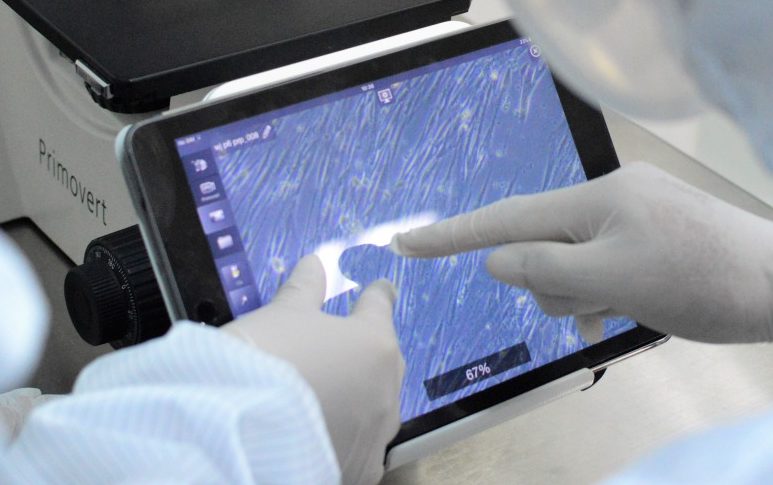In addition to adipose tissue being one of the main sources of adult stem cells, bone marrow has also been extensively explored for use in stem cell therapy. One type of bone marrow stem cell that has been widely used in therapy is the cell mononuklear bone marrow (BM-MNC) consists of a diverse population of cells such as hematopoietic stem and progenitor cells (HSC/HPC), lymphoid cells, monocyte, endothelial progenitor cells (EPC), and mesenchymal stem cells (MSCs).1 BM-MNC used for therapeutic purposes in clinical trials is usually obtained through bone marrow aspiration from the patient and is used for that patient (autologous). Subsequently, the aspirate undergoes an automatic separation process at ProSTEM to obtain BM-MNC, which can be injected directly into the patient or stored frozen for future use. The use of an automatic cell separator allows for shorter processing time and reduces the risk of microbial contamination, with higher recovery of mononuclear cells and maintained or even improved functional capacity. 3 Peripheral Blood Mononuclear Cells (PB-MNC) are white blood cells from peripheral blood consisting of lymphocytes (T cells, B cells, NK cells), monocytes, endothelial progenitor cells (EPC), and mesenchymal stem cells (MSCs). Since mononuclear cells in peripheral blood originate from the bone marrow, these cells can be stimulated or mobilized by administering systemic injections of granulocyte colony-stimulating factor (G-CSF) or granulocyte-macrophage colony-stimulating factor (GM-CSF) to increase the number of peripheral blood mononuclear cells without affecting their function and capacity.1
PB-MNC can be isolated non-invasively compared to bone marrow as a source. PB-MNC transplantation is currently used to treat patients with blood tumors or cancers. However, further research is still needed to understand its differentiation potential and transplantation capability.1 Similar to BM-MNC, PB-MNC is isolated using an automatic separation system at ProSTEM and can be injected directly or stored frozen for long-term use.
Reference:
- Yunir E, Kurniawan F, Rezaprasga E, Wijaya IP, Suroyo I, Matondang S, Irawan C, Soewondo P. Autologous Bone-Marrow vs. Peripheral Blood Mononuclear Cells Therapy for Peripheral Artery Disease in Diabetic Patients. International Journal of Stem Cell. 2020; DOI: 10.15283/ijsc20088.
- Bhat S, Viswanathan P, Chandanala S, Prasanna SJ, Seetharam RN. Expansion and characterization of bone marrow derived human mesenchymal stromal cells in serum-free conditions. Scientific Reports. 2021; DOI: 10.1038/s41598-021-83088-1.
- Nagai H, Miwa A, Yoneda K, Fujisawa K, Takami T. Optimizing the Seeding Density of Human Mononuclear Cells to Improve the Purity of Highly Proliferative Mesenchymal Stem Cells. Bioengineering (Basel). 2023; DOI: 10.3390/bioengineering10010102.


